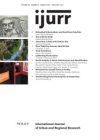Informal commerce, characterized by market and street trading activities, thrives in the central areas of many Latin American cities. Focusing on the neglected spatial dimension of informal commerce, the paper traces its considerable expansion in the historic centre of Quito in Ecuador since the early 1970s and examines the issues which have prompted municipal intervention. An early municipal response involves some attempts at redistribution of informal commerce, justified by essentially functional issues such as hygiene and congestion. However, the introduction of conservation policy and the way this policy evolved to embrace a broad concern for the urban environment is associated with the emergence of an aesthetic/cultural discourse in attitudes towards informal commerce. The authorities are increasingly motivated towards ‘selling’ a new image of the historic centre and encouraging new economies oriented towards the tourist and a relatively wealthy clientele. Moves to exclude informal commerce have concentrated on the most visible spaces, particularly those of the principal squares. Although informal trade hidden from view continues to thrive, only time and further research will show whether the re‐presentation of the historic centre and the promotion of new economies will finally effect the exclusion of informal commerce as a culmination of long‐term efforts to control its occupation of space.
Details
Written by:
Rosemary D. F. Bromley
Digital Object Identifier (DOI)
10.1111/1468-2427.00138
About DOI
Read full article as PDF
Read full article as HTML
See the references for this article
